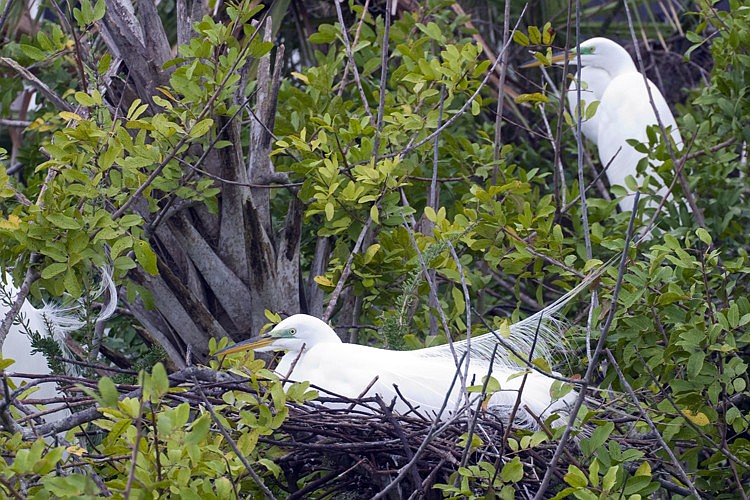- February 27, 2025

Many Floridians know Brazilian pepper as a pesky invasive that shoulders out native vegetation and should, generally, be removed because it’s an environmental problem.
Fewer, though, know that removing it the wrong way at the wrong time can just as bad.
Palm Coast wildlife photographer Scott Adie does. He’s photographed tricolor herons, great egrets and other birds in a rookery in Brazilian peppers at the Ocean Palm Golf Course many times, and he was alarmed last week when someone went out April 9-10 and cut down the trees, destroying the nests within them.
“There’s a pair of tricolor herons that keep coming back looking, wondering what happened to their nest,” he said. The tree removal, he said, resulted “in a huge loss of habitat for already nesting birds, along with the destruction of some nests.”
The rookery sits on golf course land owned by Flagler Beach, but borders Ocean Palm Villas North. Flagler Beach didn’t remove the trees, Flagler Beach City Clerk Penny Overstreet said, but the city has had problems in the past with “overzealous residents” from the condos who’ve removed vegetation on the golf course land behind their homes without city permission.
Adie said workers doing the removal said they’d been employed by the condo’s homeowner’s association to pull out the invasives, an objective he had sympathy for.
“Most state and local entities want them eradicated, and if they are an invasive species, so do I,” he said in an email to the Palm Coast Observer. But, he said, “I don't understand why removing these shrubs could not be postponed until the nesting season is over. If the HOA has a problem with invasive plants, it must be an environmental concern. If that is true, it is utterly foolish to destroy valuable bird sanctuary and nesting to address that issue.”
The Ocean Palm Villas North Homeowners Association could not immediately be reached for comment.
Look before you cut
Destroying migratory bird nests to remove invasive trees or shrubs isn’t just poor environmental stewardship, it’s a crime under multiple state and federal laws, Florida Fish and Wildlife Conservation Commission biologist Alex Kropp said.
“If you have active nests, they would be protected under the Migratory Bird Treaty Act,” he said. “Someone removing the trees would certainly want to look at see if there are active nests before they cut.”
In Florida, he said, destroying migratory bird nests is a second-degree misdemeanor punishable by 60 days in jail and a $500 fine.
Florida wading birds like egrets and herons are protected under the MBTA, which was passed in 1918 to protect birds from the plume hunters that were wiping them out, and makes it illegal to: "pursue, hunt, take, capture, kill, attempt to take, capture or kill, possess, offer for sale, sell, offer to purchase, purchase, deliver for shipment, ship, cause to be shipped, deliver for transportation, transport, cause to be transported, carry, or cause to be carried by any means whatever, receive for shipment, transportation or carriage, or export, at any time, or in any manner, any migratory bird, included in the terms of this Convention . . . for the protection of migratory birds . . . or any part, nest, or egg of any such bird,” according to the U.S. Fish and Wildlife Service webpage.
Active bird nests are also specifically protected under Florida law, Kropp said, and are generally defined as nests containing eggs or flightless.
There’s a gray area around nests that are occupied, or being constructed, by adults, he said. And for some species, including many raptors, even unoccupied nests are important because adults build a single nest and return to it year after year.
There are cases where it’s legal to move a bird nest, but doing so requires a permit issued by the FWC.
In the case of migratory birds, those permits might be issued if, for instance, a nest is on a man-made structure and endangers people or the nesting birds. The FWC evaluates the applications on a case-by-case basis.
But damaging an active bird nest to remove an invasive shrub wouldn’t cut it, Kropp said. In that case, he said, the solution is easy: Wait until nesting season ends, and the birds have left, to remove the plants.